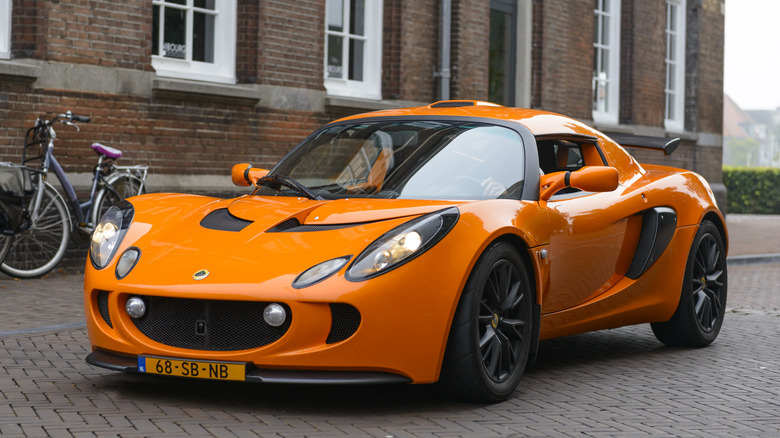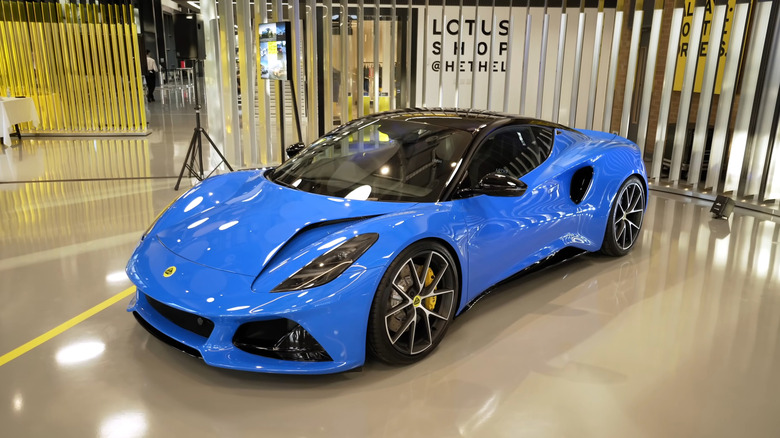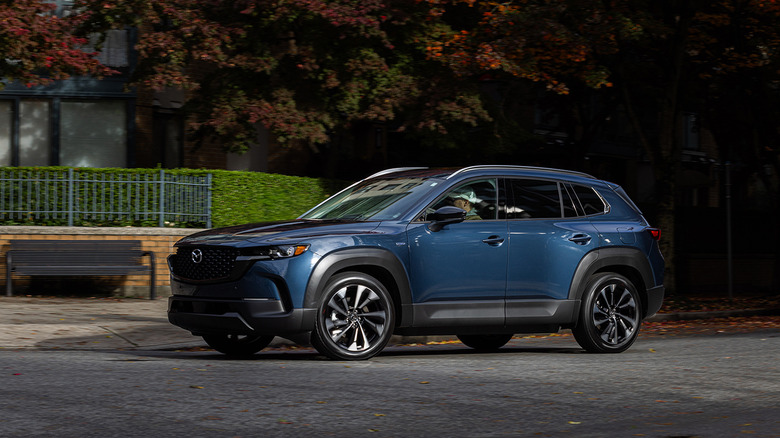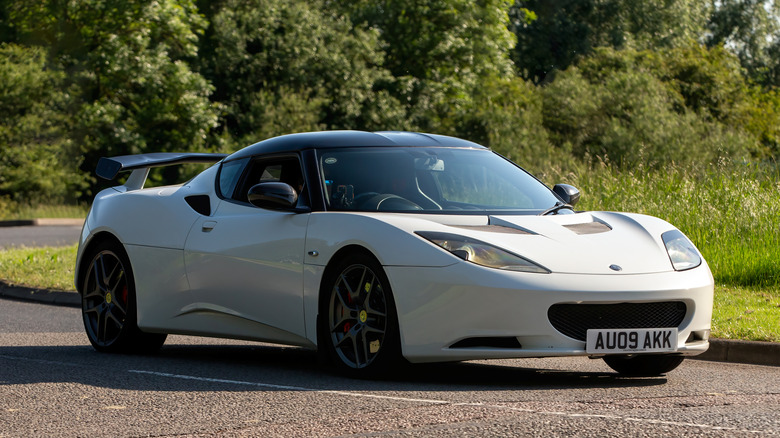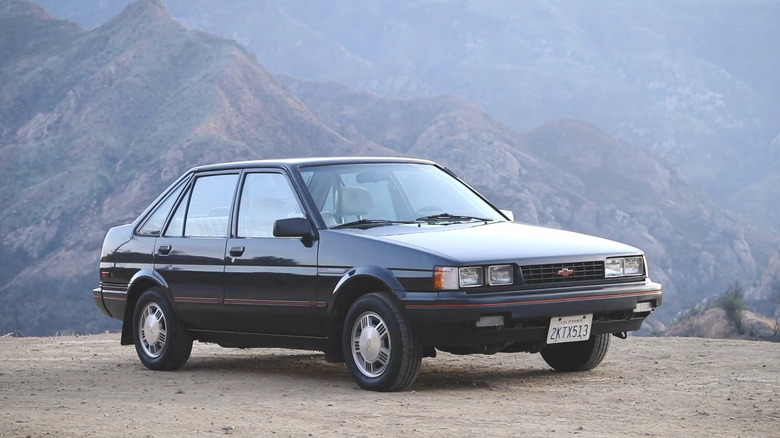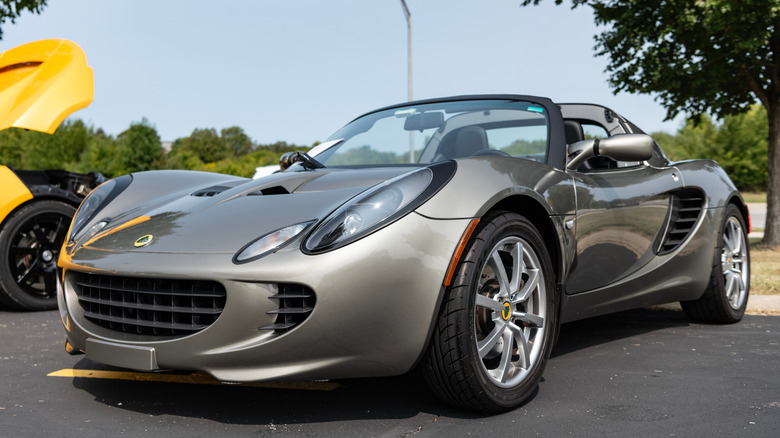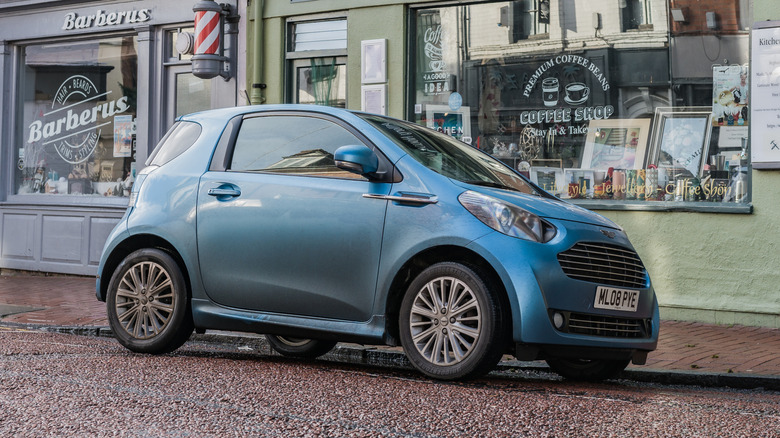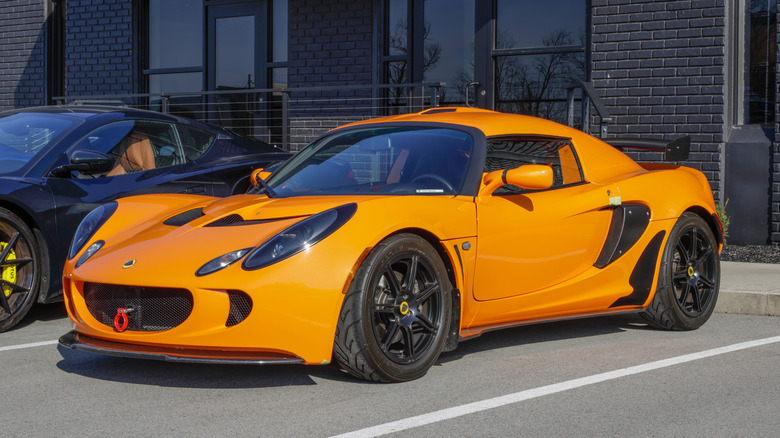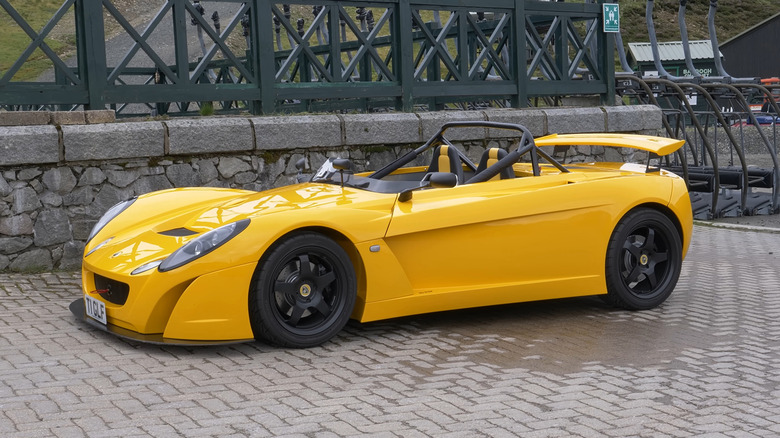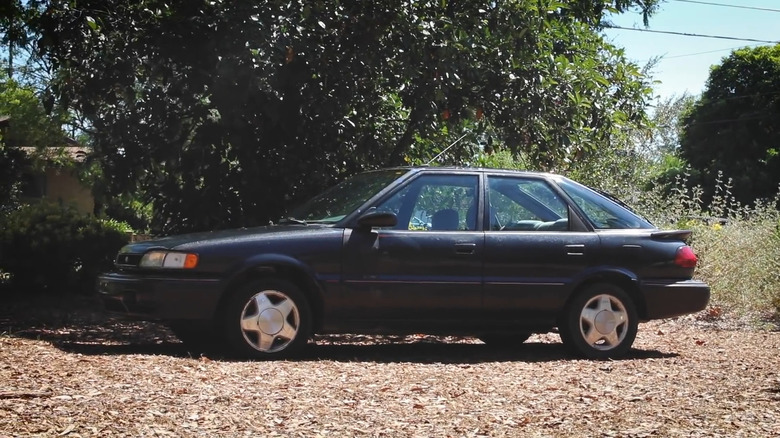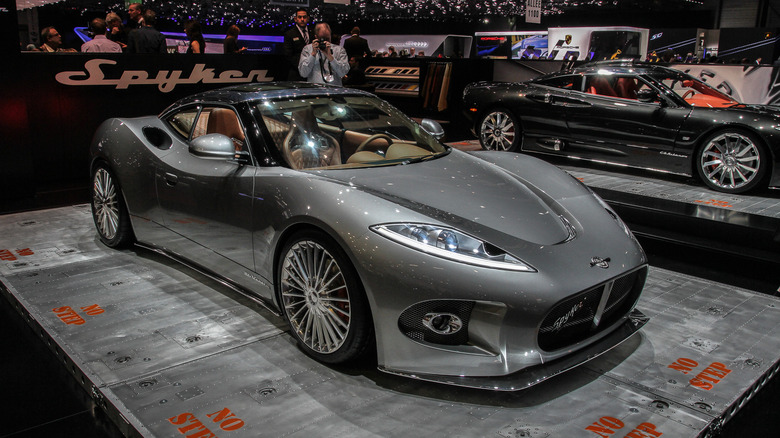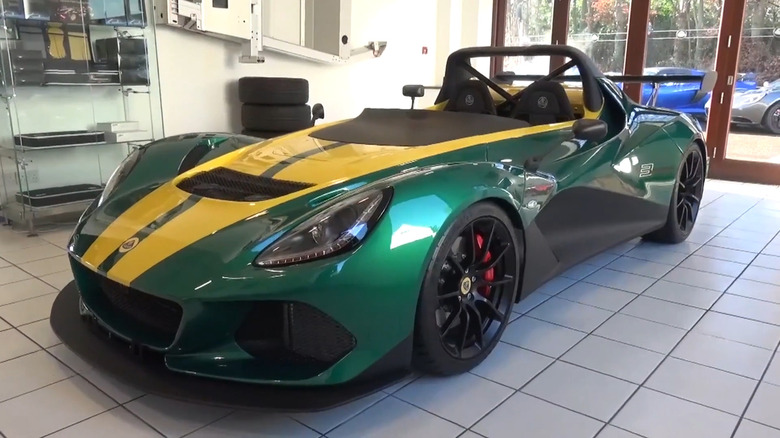12 Non-Toyota Cars With Toyota Engines Under The Hood
Outside of homegrown manufacturers, there aren't many automotive brands with the same popularity in the U.S. as Toyota. This doesn't come as a shock when you look at its past and current lineup of affordable, practical cars, ranging from compact sedans like the Corolla to full-size SUVs such as the Sequoia, to two-door coupes in the form of the GR86. Stretching across so many areas of the industry requires plenty of different engines to power these cars, but one thing that remains consistent across many Toyota models is reliability.
With not every manufacturer having the means or desire to produce their own engines, Toyota has proven to be a safe destination for smaller, cost-effective engines that you can depend on. Whether it's for another compact car that doesn't need much power at all or a low-slung, track-focused machine that requires responsiveness at all times, the various engines that Toyota offers to brands have helped some of them become crucial pieces of automotive history. Both brand-new and decades old, here's a look at 12 non-Toyota cars that use Toyota engines.
2022 Lotus Emira
Lotus' lineup looks a lot different from what it did 10 to 15 years ago. The British automaker has always offered a limited lineup compared to other brands, but it can be expected from a performance manufacturer. However, two of the three cars in production today aren't the sort of sports cars Lotus is most well-known for. The electric Emeya sedan and Electre SUV are still mightily fast thanks to their powertrains, but are a sizable deviation from compact, long-slung performance machines. However, the Emira most definitely keeps that spirit alive, turning to Toyota for one of its two powertrains.
A key rival to the Porsche 718 and even the 911 in its lower trim guises, the Emira is designed to be one of the best-handling sports cars on the road. Lotus goes to great lengths to achieve that with its aero-focused shell, sports suspension, and aluminum chassis, but a potent engine is needed to make it all work. You also have the choice of an AMG-sourced 2.0L engine, but the Toyota-sourced supercharged 3.5L V6 has been an option ever since the car's conception in 2021. Carrying over the same configuration seen in previous models like the Evora, the Emira's V6 produces 406 horsepower and 310 pound-feet of torque, reaching a top speed of 180 MPH.
2025 Mazda CX-50 Hybrid
One of the most recent applications of a Toyota engine comes from a much more direct rival than Lotus in the form of Mazda. Another Japanese brand that doesn't quite have the same presence as others in the industry, Mazda has managed to carve out its own space in the ultra-competitive crossover SUV segment by offering more premium models that don't charge huge amounts of money. The CX-50 is one of these models, serving as a compact SUV in the current lineup. The gas-only trim uses one of Mazda's in-house SKYACTIV-G engines, but the hybrid's powertrain is entirely built by Toyota.
For the 2025 CX-50 Hybrid, Mazda has opted for the RAV4 Hybrid engines, which isn't a surprise considering the monumental success of the latter model. The engine in question is a 2.5L four-cylinder engine along with three electric motors, combining for an output of 219 horsepower and 163 pound-feet of torque. Even with all-wheel drive standard, you should be able to achieve 38 MPG combined with the latest CX-50 Hybrid, according to the EPA. Inside the Mazda, features like the 10.25-inch center touchscreen and leatherette seat trim push it slightly above the likes of the RAV4 Hybrid for comfort and convenience, with a starting price tag of $33,970 (plus a $1,495 destination charge) for the base Preferred trim.
2003 Pontiac Vibe
The Pontiac Vibe may struggle to hit the ground running if it were to be introduced today, but it was certainly a great car for its time. General Motors, the parent company of Pontiac before it was discontinued from the market in 2010, was no stranger to collaborations with Toyota, even before the Vibe was introduced in 2002, and lasting until 2008. Blurring the lines between a hatchback and wagon, the Vibe had a lot going for it, as did the Toyota Matrix, which was developed alongside the Pontiac and shared plenty of similarities.
Under the skin, the Pontiac Vibe is pretty much all Toyota. Both the Vibe and the Matrix were built on the platform used by the Corolla at the time. The engine was also sourced from the Japanese giant, using a 1.8L inline-four producing 130 horsepower and 125 pound-feet of torque. Performance wasn't the intention by any stretch of the imagination, but the Toyota engine still gives the American hatchback enough power to get the job done. As for efficiency, the 2003 model can achieve 28 MPG combined, with KBB reporting an average used price of just $3,044 on the used market. If you'd prefer a newer model, the 2010 Vibe goes for around $6,132.
2008 Lotus Evora
Before the Emira was introduced as the flagship sports car for Lotus, the Evora championed the brand at the premium end of the brand's staple segment with plenty of success. The Evora had quite a long life, first entering production in 2008 and lasting until 2021. Over the years, it naturally received its share of updates and improvements, namely to the engine, but the Evora always came with a Toyota engine under its fiberglass bodywork. For the 2008 model, Lotus took the 2GR-FE 3.5L V6 engine that was an option for the likes of the Camry, as well as larger nameplates such as the RAV4 and Highlander.
For the Evora, however, the 276 horsepower and 258 pound-feet of torque allowed the much smaller sports car to make the most of the robust engine. Supercharged trims could produce 345 horsepower. The sports car remained relatively the same on the outside throughout its lifespan, but Lotus continued to bolster its Japanese engine, first with the aptly-named Evora 400 that increased the output to 400 horsepower in 2015. At its peak, the Evora produced a maximum of 430 horsepower with the 2017 GT430 model.
1985 Chevrolet Nova
We mentioned one of the more recent collaborations between Toyota and General Motors with the Vibe, but another one of the most notable ventures came as soon as the two manufacturers joined forces in a major way back in the '80s. The partnership was named the New United Motor Manufacturing Incorporated, or NUMMI, which sought to reap benefits for both parties. GM wanted to see how Toyota produces its world-class compact cars in hopes of making its own models just as affordable and reliable, and Toyota got to establish a production plant in the U.S.
The first car to be produced under this partnership was the 1985 Chevrolet Nova. The Nova nameplate had already been a popular car in its muscle-style form, but the revitalized Nova expectedly shared many similarities with Corolla, Toyota's massively successful flagship compact car. Using the same platform, the 1985 Chevrolet Nova was equipped with the 1.6L four-cylinder that produced just 74 horsepower and 85 pound-feet of torque. Although it didn't explode onto the compact car scene, it provided GM with a reliable small car, thanks to its Japanese underpinnings.
2004 Lotus Elise
Lotus certainly had countless iconic sports cars to its name before the 2000s, but the Elise shaped the direction that the brand still follows today with the Emira. Not only inspiring the brand itself, but also introducing a new way to produce small, lightweight, blisteringly fast sports cars that come alive when pushed. The Elise was introduced in 2005 for the U.S. market with the Series 2 and remained in production until 2021 — a true testament to its immense capabilities.
A Toyota-sourced 1.8L 2ZZ-GE inline-four producing 189 horsepower propelled the Elise. What still makes it so special is the use of a bonded aluminum chassis, which made the Lotus the first production car to ever utilize this design. The chassis was the core reason for the Elise's standout responsiveness and agility, which still makes the earlier models great track toys if you're on more of a budget compared to the industry's current prices. The Elise used various Toyota engines between 2004 and 2021, ending with a 240-horsepower inline-four in its last year.
2011 Aston Martin Cygnet
Considering Aston Martin's heritage for producing all-powerful supercars, seeing the Cygnet among nameplates such as the Vantage, Vanquish, and DBS is a little bit of a strange one. Aston Martin has branched out into various other segments before, recently with the DBX SUV, but that still upholds the performance that you'd expect from the brand. The Cygnet made its debut in 2011, becoming one of the most unique Aston Martin models ever made.
The primary reason this car entered production was to help Aston Martin become a more eco-friendly brand. Particularly with the emissions regulations at the time, they needed to reduce the carbon footprint as a whole, making the Cygnet the perfect way to do it. While Aston Martin gave it some styling updates and luxury features inside, the Cygnet shares its mechanics with the Toyota iQ. The chassis and platform are the same, as is the 1.3L four-cylinder engine producing 97 horsepower and 91 pound-feet of torque. Aston Martin put a V8 engine inside the tiny car for a one-off model, which pushed it up to 430 horsepower. Unfortunately, the Cygnet never made it Stateside.
2004 Lotus Exige
After the success of the Elise in the late 1990s, it wasn't long before Lotus rolled out its more extreme, track-focused version of the sports car for those who didn't find the former model as hardcore as they wanted. Named the Exige, the larger sibling to the Elise was introduced in 2000. U.S. customers had to wait a little longer, however, with Lotus bringing the Exige over in 2006 with the second-generation model.
From a distance, it's hard to tell the major differences between the Elise and Exige. But Lotus made sure to make the Exige a far more capable track machine compared to the Elise, predominantly through aerodynamics. Strapped to the bodywork of the 2006 model was a rear wing and front splitter, along with more subtle upgrades like the fixed roof, all helping the sports car to produce around 90 pounds of downforce at 100 MPH. Turning to the engine, the Exige used the same 1.8L four-cylinder Toyota engine, producing 190 horsepower, which was introduced in 2004 with the S2 Exige. A year later, the Exige S was made available, which produced 215 horsepower thanks to the addition of its supercharger. The Exige was discontinued alongside the Elise and Evora in 2021.
2007 Lotus 2-Eleven
The Exige may have been the perfect car if you wanted to extract more performance from the Elise, but, in true Lotus fashion, the British automaker built an even more track-dedicated machine in 2007 named the 2-Eleven. Getting its name from the iconic Le Mans Index of Performance-winning Lotus Eleven, the 2-Eleven once again used the brand's small car platform, but implemented new weight-saving and aero-enhancing components, then removed anything that would slow it down on the racetrack.
Lotus kept the Toyota 2ZZ engine under the shell for the 2-Eleven, but boosting its power output once again to produce 249 horsepower and 178 pound-feet of torque. This was enough to get the ultra-lightweight car to 62 MPH in a mere 3.8 seconds. It had no roof or proper windshield, all in a bid to save weight. The body panels were also constructed using a new material that Lotus called 'core mat', alongside the fiberglass used in the previous Elise and Exige models. In its imported guise, the 2007 2-Eleven wasn't even road legal in the U.S., but other markets offered a version that added on all the essentials to pass the road laws.
1990 Geo/Chevrolet Prizm
Toyota and GM's NUMMI venture continued going strong throughout the 1980s, with the Chevrolet Nova being seen as a success by both sides of the partnership. Towards the end of the decade, though, sales for the Nova weren't doing so well, resulting in GM introducing a new brand: Geo. Instead of offering what was essentially a rebadged Corolla under Chevrolet, Geo was created for the sole intent of selling import-style cars, with the first being the Prizm.
Hitting the road for the 1990 model year, the Geo Prizm shared many similarities with the outgoing Nova, still being based on the Corolla of its time. One difference between the Prizm and the Nova, however, was the increase in power from its newer 1.6L four-cylinder, producing 102 horsepower in the base trim and 130 horsepower for the GSi model. Both engines could put down 101 pound-feet of torque. In 1997, however, GM pulled the plug on Geo, giving the Prizm nameplate to Chevrolet to continue its production until 2001.
2013 Spyker B6 Venator
The Spyker B6 Venator is one of the outliers on this list, mainly because the car never made it to production. Spyker was a Dutch brand focused on producing hand-built, limited sports and supercars, gaining a foothold in the scene with nameplates such as the C8. In 2013, Spyker unveiled the B6 Venator concept, which was designed to rival other affordable performance cars at a price tag of around $134,000. Production was slated for 2014, but due to vast financial woes, Spyker filed for bankruptcy, meaning the B6 never got to see its day.
If the Spyker B6 did end up being produced, the Dutch brand was set to receive its engine from Lotus, known for its relationship with Toyota engines. The Lotus engine that B6 would have received was a Toyota-blocked 3.5L V6 from the Evora, with Spyker targeting an output of 375 horsepower, up from the 345 horsepower the supercharged Evora could achieve in 2013. The prospect of the Spyker B6 was certainly an enticing one, with another mid-engined sports car entering the scene, but the concept car is all we have to look at. Spyker's most recent vehicle came 3 years later in the C8 Preliator.
2015 Lotus 3-Eleven
After the 2-Eleven reaffirmed buyers' interest in the track-focused 2-Eleven, it wasn't a surprise to see Lotus one-up the sports car with its most powerful model yet in the 3-Eleven. The premise was the same, with the 3-Eleven being incredibly stripped back to maximize every aspect of its aerodynamics and weight savings. By only weighing a mere 1,962 pounds in its Race trim, the power-to-weight ratio puts it among the world's best.
Sharing the same platform as the Exige, once again putting Lotus' groundbreaking bonded aluminum chassis to good use. It also takes the 3.5L V6 engine, but takes it to completely new territory with an output of 454 horsepower in the Race spec and 404 horsepower in the Road spec. Downforce ratings come in at a staggering 330 pounds at 150 MPH in the road-legal car. The Race model, however, with its aero enhancements alongside its power upgrade, improves on that to 474 pounds at the same speed. Similar to the 2-Eleven, the 3-Eleven was far too extreme to be made road-legal in the U.S., although you could still buy one if you wanted the ultimate track weapon of the mid-2010s.
